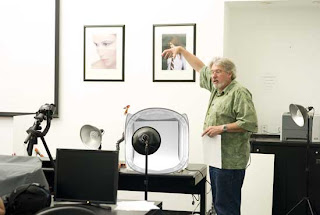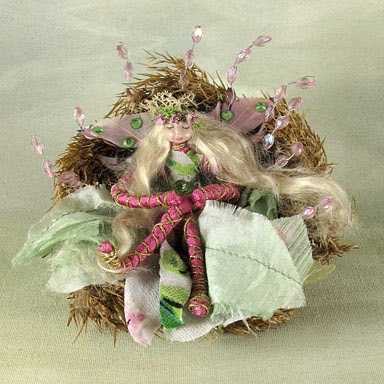Tips & Tricks

10 Tips To Get Started In Underwater Photography
All Famous Photographers TipsAlthough the professional and major amateur underwater photography any time is good to practice this specialty, the approach of summer is usually a good excuse to start in this world or improve our technique. And for that, you had better take note of the 10 tips to get started in underwater photography, one of the leaders of the shop Kanal and authentic expert on the subject, which dealt with from the equipment needed to photographic detail to consider to submerge.
Photo: Norbert Probst

1. Prepare a new computer. The first thing to do after buying an underwater case is a dive with it empty, pressing all the buttons and activating all the levers. Upon verification of tightness, a free to enter the computer and start working. While circulating around the idea that housing must be filled toilet paper to make the first leak test, with this we will only leave the box full of cell debris. Something obviously is not advisable.
2. Performance light and flashes. If the light surface is the essential element for underwater photography, this premise makes more sense, because due to the absorption and scattering of the same colors are lost. From three meters, the red color turns brown, and are lost orange and yellow. From 15 meters, the landscape is green and blue. Therefore, the use of external flash is necessary to capture all the chromaticism of the fund.
Even so, the distance of the flash range is also limited, so when the truth is only less than ten feet away (depending on water visibility) icon will appear in the picture.
3. Objective bright and low sensitivity. Underwater light is scarce. A very bright object is a good starting point to capture good pictures, since having to raise sensitivity to compensate for the lack of light will generate a noise that will be greatly enhanced by the blue key. We will attempt to always work with values of 100 or 200 ISO to maximize quality.
4. Macro. Macro photography is very "grateful" in this discipline. The shortest distance to the subject results in a cleaner and making colors more vivid, because there is less water and light through our flashes reach the subject photographed without problems. Furthermore, the density of water and suspended particles act as a brake light, which we always approach everything we can to the scene.
5. Working in RAW. As long as your camera allows us not hesitate to take photos in RAW format. Underwater light conditions are continually changing as we gain depth and to the position of the sun On the other hand, the immersion time is limited, so it is better to take advantage until the last second to compose and search for images or repeat a wall and leave the issue for later, on the computer. Shooting in this format post-production possibilities multiply.
Photo: Mikael Jigmo

6. Approach and the image plane. To get closer to the majority of underwater fauna must be done slowly and below. And better addressed with the team and, as any sudden movement may cause the animal to flee. It is also important not to block his escape route if you are in a crack and take advantage of the approach for a test shot and see if the flashes are well placed.
Regarding the frame, avoid photographing animals planes above or from behind. Taking a little lower and angled highlight the volume and blue sea. The bottom-up vertical shots give an idea of how deep we are, which is one aspect to be transmitted.
7. The color correction filters. Since the scope of light under water is limited, it is sometimes interesting to use correction filters (red and orange to magenta to blue water green water) to get tones that otherwise would be monochrome. Keep in mind, though, that the use of these filters is incompatible with the simultaneous firing of flashes.
8. Maintenance of the housing. All boxes are sealed O-rings to make sure sealing. Maintenance is very simple and basically consists in making sure the seal is lubricated. A small amount of silicone grease - equal to one or two grains of rice, depending on size, will be more than enough for the board just right.
This must be done every two or three dives, and before closing the case must be checked in O-ring is attached dirt. Remove the board from its housing to gear is not a good idea, because sooner or later would eventually expand, with the consequent risk of flooding of the team.
9. Buoyancy. It is essential to have good buoyancy control to get to stay static at the time of photographing. Keep in mind that it is not advisable to rely on to take pictures. In addition to the marine environment is very vulnerable and coral daemon take hundreds of years to recover, we can also have problems with camouflaged animals can be dangerous. Needless to say, to change things around to improve the composition of the picture is not right. And is that no picture is more important than the environment where they performed.
10. Security people and equipment first. All housings have some system to secure them to one of the rings diving vest with specific extenders or even directly to the wrist. These methods are a good way to keep the team due to an ocean current or up to the boat after the dive.
Photo: Pedro Gonio

However, it must be remembered that if we are photographing large, fast animals such as sharks, dolphins, this system can be dangerous. In these circumstances, the team should be subject only by our hands, because if the animal trap for any reason and away with him, we would be able to release it immediately. We must be clear before diving that our security team is ahead or the best picture we can do.
That's 10 Tips To Get Started In Underwater Photography Tips developed by Juan José Sáez
Photo: Norbert Probst

1. Prepare a new computer. The first thing to do after buying an underwater case is a dive with it empty, pressing all the buttons and activating all the levers. Upon verification of tightness, a free to enter the computer and start working. While circulating around the idea that housing must be filled toilet paper to make the first leak test, with this we will only leave the box full of cell debris. Something obviously is not advisable.
2. Performance light and flashes. If the light surface is the essential element for underwater photography, this premise makes more sense, because due to the absorption and scattering of the same colors are lost. From three meters, the red color turns brown, and are lost orange and yellow. From 15 meters, the landscape is green and blue. Therefore, the use of external flash is necessary to capture all the chromaticism of the fund.
Even so, the distance of the flash range is also limited, so when the truth is only less than ten feet away (depending on water visibility) icon will appear in the picture.
3. Objective bright and low sensitivity. Underwater light is scarce. A very bright object is a good starting point to capture good pictures, since having to raise sensitivity to compensate for the lack of light will generate a noise that will be greatly enhanced by the blue key. We will attempt to always work with values of 100 or 200 ISO to maximize quality.
4. Macro. Macro photography is very "grateful" in this discipline. The shortest distance to the subject results in a cleaner and making colors more vivid, because there is less water and light through our flashes reach the subject photographed without problems. Furthermore, the density of water and suspended particles act as a brake light, which we always approach everything we can to the scene.
5. Working in RAW. As long as your camera allows us not hesitate to take photos in RAW format. Underwater light conditions are continually changing as we gain depth and to the position of the sun On the other hand, the immersion time is limited, so it is better to take advantage until the last second to compose and search for images or repeat a wall and leave the issue for later, on the computer. Shooting in this format post-production possibilities multiply.
Photo: Mikael Jigmo

6. Approach and the image plane. To get closer to the majority of underwater fauna must be done slowly and below. And better addressed with the team and, as any sudden movement may cause the animal to flee. It is also important not to block his escape route if you are in a crack and take advantage of the approach for a test shot and see if the flashes are well placed.
Regarding the frame, avoid photographing animals planes above or from behind. Taking a little lower and angled highlight the volume and blue sea. The bottom-up vertical shots give an idea of how deep we are, which is one aspect to be transmitted.
7. The color correction filters. Since the scope of light under water is limited, it is sometimes interesting to use correction filters (red and orange to magenta to blue water green water) to get tones that otherwise would be monochrome. Keep in mind, though, that the use of these filters is incompatible with the simultaneous firing of flashes.
8. Maintenance of the housing. All boxes are sealed O-rings to make sure sealing. Maintenance is very simple and basically consists in making sure the seal is lubricated. A small amount of silicone grease - equal to one or two grains of rice, depending on size, will be more than enough for the board just right.
This must be done every two or three dives, and before closing the case must be checked in O-ring is attached dirt. Remove the board from its housing to gear is not a good idea, because sooner or later would eventually expand, with the consequent risk of flooding of the team.
9. Buoyancy. It is essential to have good buoyancy control to get to stay static at the time of photographing. Keep in mind that it is not advisable to rely on to take pictures. In addition to the marine environment is very vulnerable and coral daemon take hundreds of years to recover, we can also have problems with camouflaged animals can be dangerous. Needless to say, to change things around to improve the composition of the picture is not right. And is that no picture is more important than the environment where they performed.
10. Security people and equipment first. All housings have some system to secure them to one of the rings diving vest with specific extenders or even directly to the wrist. These methods are a good way to keep the team due to an ocean current or up to the boat after the dive.
Photo: Pedro Gonio

However, it must be remembered that if we are photographing large, fast animals such as sharks, dolphins, this system can be dangerous. In these circumstances, the team should be subject only by our hands, because if the animal trap for any reason and away with him, we would be able to release it immediately. We must be clear before diving that our security team is ahead or the best picture we can do.
That's 10 Tips To Get Started In Underwater Photography Tips developed by Juan José Sáez





















